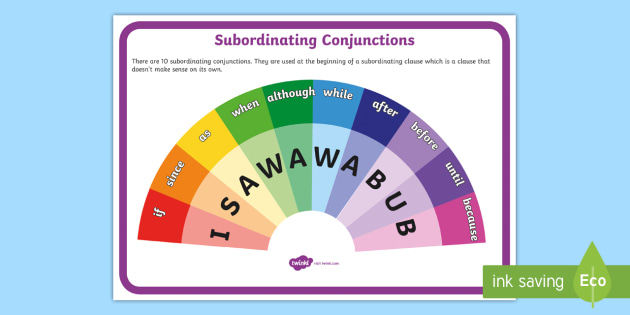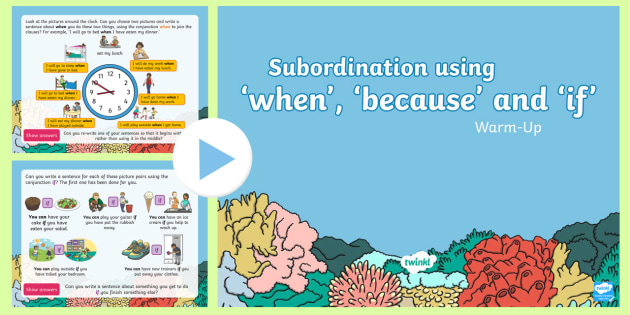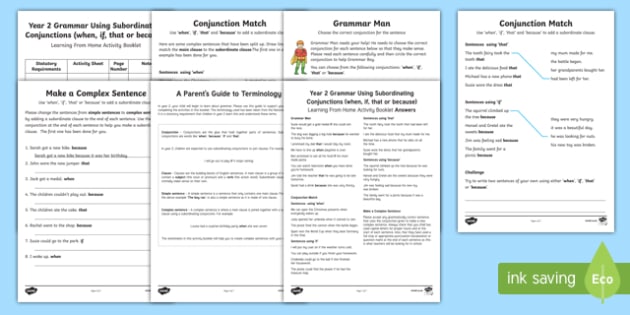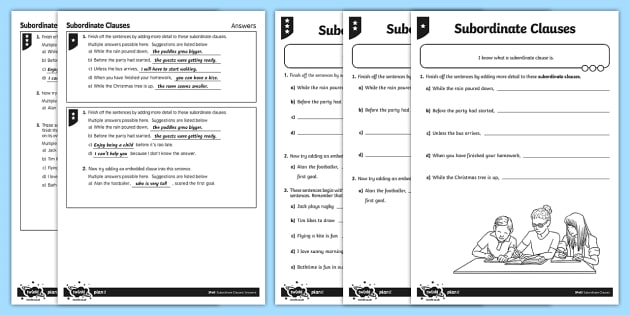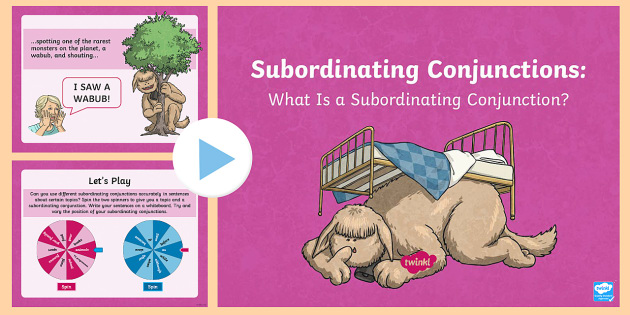

Subordination is the process of connecting two sentences or parts of a sentence together to show that one part is more important than the other.
These two parts of a sentence, the main clause and the dependent clause, are merged together using a subordinating conjunction.
The main clause can be read as a sentence on its own, while the dependent clause would not make sense without the main clause.
Main clause + Subordinating conjunction + Dependent clause
I ate the banana shake + after + my mom told me I could.
Subordinating conjunction + Main clause + Subordinating Clause
Because + it was raining + I took an umbrella.
The first part of the sentence can either be the main clause or the subordinating clause, depending on how you want to write your sentence. This example follows using the main clause as the first part of the sentence.
The next part will be the subordinating clause. This can be any conjunction that shows an imbalance or contrast, e.g. although, because, unless, after, if, etc.
The last part of the sentence is the dependent clause - this is the part that's being compared. The reason the bike needs a new coat of paint is that it's very old.
So, the full sentence would be:
We could also swap the main clause and subordinate clause around to write the sentence in this way:
They're both correct - it's just up to you how you want to write the sentence.
Coordination and subordination are contrasting ways to join a sentence or clause together.
Subordination is when two clauses are joined together that compare/contrast/add a condition. One sentence or clause is of more value than the other.
Coordination is when two clauses of the same value are added together using a coordinating conjunction.
Coordinating conjunctions can be remembered by using the anagram, FANBOYS.
| Type | Conjunction Examples |
Sentence Example |
| Concession | although, while, though, whereas, even though | I was riding in the passenger seat while my little brother rode in the back. |
| Condition | if, unless, until | I won't drink my tea unless it has sugar in it. |
| Manner | as if, as, though | I wrote a page, though they asked for two. |
| Place | where, wherever | I bought the bread from the bakery, where they make it from scratch. |
| Reason | because, since, so that, in order that | I bought the lilies because they are my favourite flower. |
| Time | after, before, while, once, when | I ate my dessert after my dinner. |
You can use the anagram 'I SAW A WABUB' to remember just a few of the subordinating conjunctions!
Are you teaching your pupils about subordination? Then Twinkl's got plenty of resources to help you save time and energy when it comes to lesson planning and preparation. Whether you're introducing children to it for the first time or giving them a refresher before SATs, you can use these resources to support their learning.
You can rest assured, too, because every single resource has been made, checked and approved by experienced teachers. You can trust that the content is accurate and up-to-date with the national curriculum guidelines.
This PowerPoint is a brilliant way to teach your year 2 children all about subordination and what it is. It includes a wide range of interactive activities to engage pupils' minds and help them learn all about subordination. Perfect to use as a starter activity or as a refresher.
Give children the opportunity to hone their skills with this fantastic activity booklet. It includes a number of activities for them to complete, all centred around using subordinating conjunctions. The activities are great practice and improve children's knowledge of the topic overall.
These worksheets are a brilliant way to test children's skills and see what they've learnt so far. They ask children to look at the sentences and finish them off by adding either the main or subordinate clause, depending on which worksheet they work on. They're available in differentiated versions so you can make sure every pupil receives the right amount of challenge.
Introducing subordination for the first time? Then you'll find this PowerPoint helpful. It explains what subordinating conjunctions are and how we use them in sentences. Then, there's plenty of interactive activities to keep your class engaged while they learn.
If you'd like to use any of these resources in your lessons, just click the 'Download Now' button. The resource will save to your device within just a few seconds, and then you're ready to use it however you like. It's quick and easy to start teaching 'what is subordination?' with the help of these resources.
 Home
Home  Membership
Membership  Customer Support
Customer Support  Create
Create  Blog
Blog 



